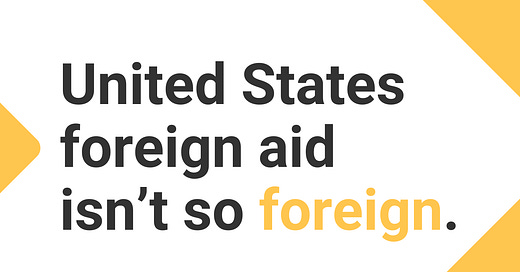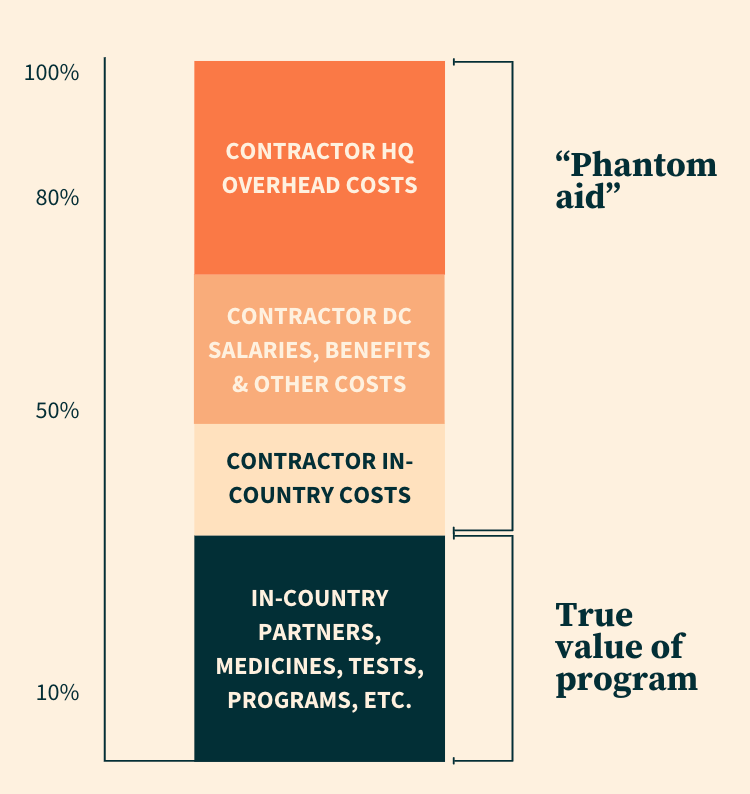United States foreign aid isn’t so foreign.
Americans receive the most U.S. foreign aid $.
↳ Not the Global South.
You heard that right.
The USA has a $60 billion international affairs budget.
But most of that funding will never reach other countries, according to a disturbing report from Unlock Aid called Follow the Money.
“The open secret in Washington, DC is that very little of American foreign aid ever leaves America’s capital city,” it says. “Well-connected insiders will capture an enormous share of those public resources while communities on the frontlines will not.”
Even USAID chief Samantha Power calls it an “industrial aid complex.”
Here’s the damning data. ⤵
90% of USAID’s budget favors hometown Washington D.C. partners
Five of 10 USAID dollars are funneled to just 10 total Beltway Bandits
Only 14% of these contractor earnings reached locally-led brands
73% of local orgs report broken financial promises by big consultants
Despite failing half the time, major contractors still receive full payment
So USAID is more us, less aid.
This story must be told.
Because grassroots nonprofits can’t compete with big aid fundraising. So they subcontract — alongside hundreds of other local organizations — with one of the massive prime contractors.
shares many problems with this setup:
Aid heavyweights displace locals and distort market dynamics
Big aid can unethically masquerade as locals, snatching grants
Locally-led organizations are often baited for bids, then dropped
Projects are imposed on communities, not proposed collaboratively
Why do I care?
Much of America’s wealth was extracted from and built on the backs of the Global South.
And having been a resident in four Global South countries since 2016 — but still required to pay U.S. taxes — I’ve seen that locally-led solutions are more just and more effective too.
Yet, our small nonprofit clients get shafted.
We can help build their brands and tell their stories. But many remain unseen, unheard, and underfunded due to oppressive systems.
What to do?
The Follow the Money report contains seven solid recommendations. And USAID itself recognizes the problem. Thus its goal to shift 25% of funds to locally-led orgs.
But “it’s a radical double standard,” says Unlock Aid. “Officials pain themselves to get the 25% ‘local’ definition just right, but we’re not applying any such scrutiny to the other 75%.”
To be clear, this is a critique of the game — not the players.
“We know that most of the people who went to work for big aid contractors and government aid agencies did so to serve a higher mission. But they’re stuck in a broken system.”
In short:
Charity begins at home, the saying goes.
But for U.S. aid, the home bias clearly shows.
💪🏽💛
The daily bonus
A few additional (and telling) infographics from the Follow the Money research. Read the full report for more.
Sneak peek
Coming up in tomorrow’s newsletter:
Are you these 7 effective leadership styles, or the one to avoid?







